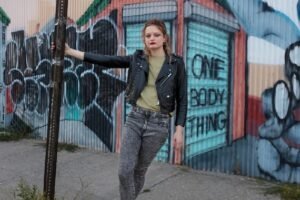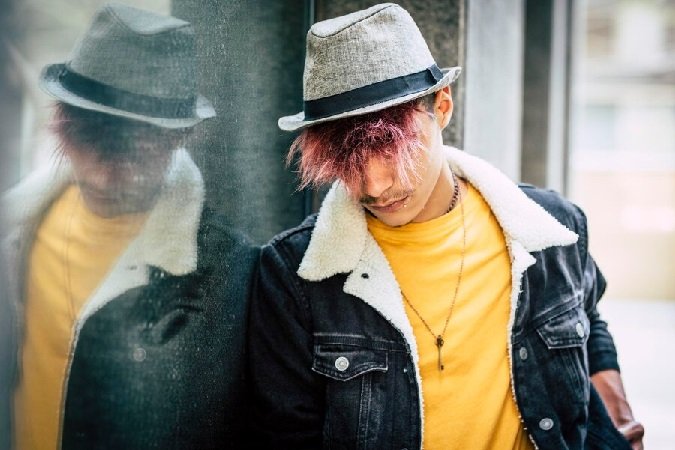Introduction to Punk Fashion
Punk fashion is more than just a style; it’s a statement. Emerging in the 1970s as a response to societal norms, punk fashion became a cornerstone of the punk subculture. This bold and rebellious aesthetic quickly transcended music to influence art, politics, and mainstream fashion. But what defines fashion, and why does it continue to resonate today?
In this guide, we’ll dive deep into fashion’s origins, iconic elements, and its enduring legacy in modern culture.
Origins of Punk Fashion
The Birth of Punk
Punk fashion originated alongside punk music in the mid-1970s in the UK and the US. Bands like The Sex Pistols, The Clash, and The Ramones not only defined punk music but also embodied the style. Their raw energy and disdain for mainstream culture were reflected in their unconventional clothing.
Influential Designers
Two figures played pivotal roles in shaping early fashion:
- Vivienne Westwood: Known for her provocative designs, Westwood’s boutique, SEX, in London became a hub for punk.
- Malcolm McLaren: The manager of the Sex Pistols and Westwood’s partner, McLaren’s influence helped popularize the punk look globally.
Core Elements of Punk Fashion

Punk fashion isn’t just about what you wear; it’s about how you wear it. Here are the defining elements:
1. Leather Jackets
The leather jacket is a punk staple. Adorned with studs, patches, and slogans, it symbolizes rebellion and individuality.
2. Torn and Distressed Clothing
Ripped jeans, frayed shirts, and distressed fabrics are hallmarks of fashion. These pieces reflect a DIY ethos, rejecting polished and pristine appearances.
3. Band T-Shirts
Wearing T-shirts of punk bands is a way to show allegiance to the subculture. These shirts are often customized with safety pins, patches, or bleach designs.
4. Safety Pins and Studs
Accessories like safety pins, spikes, and studs are synonymous with fashion. Initially used out of necessity, they became iconic symbols of the movement.
5. Bold Hairstyles
Mohawks, spiked hair, and brightly dyed colors are quintessential punk hairstyles. These daring looks push boundaries and demand attention.
6. Combat Boots
Brands like Dr. Martens and other heavy-duty boots are favored for their rugged appearance and practicality.
7. Plaid and Tartan Patterns
Originally a nod to traditional British styles, plaid pants and skirts became subversive when integrated into fashion.
8. DIY Aesthetic
The DIY aspect of fashion is critical. Customizing clothes with patches, hand-painted designs, or slogans is a way to express individuality.
Evolution of Punk Fashion
1980s: Hardcore Punk
In the 1980s, punk evolved into hardcore punk, leading to a more stripped-down style. Functional clothing like jeans, band tees, and work boots became popular.
1990s: Pop Punk and Mainstream Influence
The 1990s saw the rise of pop-punk bands like Green Day and Blink-182. Punk-inspired fashion entered the mainstream, blending rebellion with a more polished aesthetic.
2000s and Beyond: Punk Revival
Punk fashion continues to evolve, blending with other styles like goth, grunge, and streetwear. Designers like Alexander McQueen and brands like H&M have drawn inspiration from punk’s edgy aesthetic.
Punk Fashion Around the World

Punk in the UK
The UK punk scene is known for its political edge. Slogans, anti-establishment imagery, and tartan patterns are common in British fashion.
American Punk
In the US, fashion leaned toward practicality. Denim, bandanas, and workwear became staples.
Japanese Punk
Japan’s punk scene blends traditional elements with bold colors and intricate designs. Visual Kei, a subgenre of Japanese punk, emphasizes theatrical and avant-garde looks.
Modern Punk Influences
Punk in High Fashion
Punk’s rebellious aesthetic has inspired many designers:
- Alexander McQueen: Known for edgy and dramatic designs.
- Vivienne Westwood: Continues to incorporate punk elements in her collections.
Celebrities Embracing Punk
Celebrities like Rihanna, Billie Eilish, and Harry Styles have incorporated punk elements into their looks, bringing the style to a new generation.
DIY Punk Fashion: How to Create Your Own Look
Punk fash thrives on creativity. Here’s how to craft your own punk-inspired outfit:
- Start with Basics: Invest in staples like a leather jacket, band tees, and ripped jeans.
- Customize Your Clothing: Add patches, paint, or safety pins to personalize your pieces.
- Accessorize Boldly: Experiment with spiked bracelets, chokers, and unconventional accessories.
- Play with Hair and Makeup: Try bold hair colors and dramatic eyeliner to complete the look.
Why Punk Fashion Still Matters
Punk fashion isn’t just about clothing—it’s a way to express individuality, challenge norms, and make a statement. Its enduring appeal lies in its ability to evolve while staying true to its rebellious roots.
Conclusion
Punk fashion remains a powerful symbol of resistance and creativity. Whether you’re drawn to its raw energy, DIY ethos, or bold aesthetics, fashion invites you to break the rules and embrace your individuality.
Explore the punk aesthetic, experiment with styles, and make your own statement—because fashion is, and always will be, unapologetically you.
Read Also: 80s Fashion Men: Bold Styles, Iconic Trends, and Must-Have Pieces
